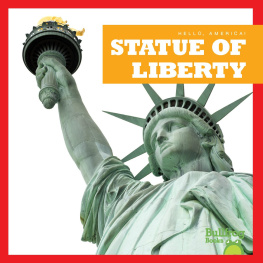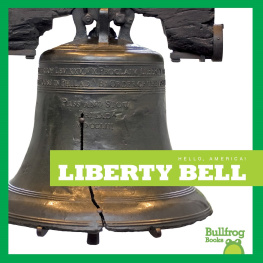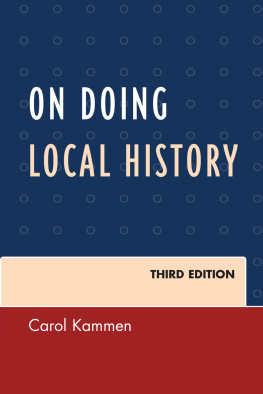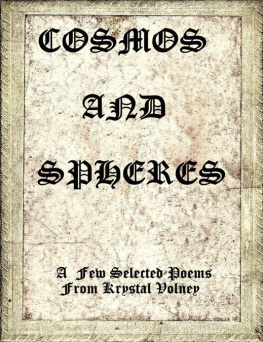Kammen - Spheres of Liberty
Here you can read online Kammen - Spheres of Liberty full text of the book (entire story) in english for free. Download pdf and epub, get meaning, cover and reviews about this ebook. year: 1986, publisher: University Press of Mississippi, genre: Politics. Description of the work, (preface) as well as reviews are available. Best literature library LitArk.com created for fans of good reading and offers a wide selection of genres:
Romance novel
Science fiction
Adventure
Detective
Science
History
Home and family
Prose
Art
Politics
Computer
Non-fiction
Religion
Business
Children
Humor
Choose a favorite category and find really read worthwhile books. Enjoy immersion in the world of imagination, feel the emotions of the characters or learn something new for yourself, make an fascinating discovery.

Spheres of Liberty: summary, description and annotation
We offer to read an annotation, description, summary or preface (depends on what the author of the book "Spheres of Liberty" wrote himself). If you haven't found the necessary information about the book — write in the comments, we will try to find it.
Spheres of Liberty — read online for free the complete book (whole text) full work
Below is the text of the book, divided by pages. System saving the place of the last page read, allows you to conveniently read the book "Spheres of Liberty" online for free, without having to search again every time where you left off. Put a bookmark, and you can go to the page where you finished reading at any time.
Font size:
Interval:
Bookmark:
THE CURTI LECTURES
1985
To honor the distinguished historian Merle Curti, lectures in social and intellectual history were inaugurated in 1976 under the sponsorship of the University of Wisconsin Foundation and the Department of History of the University of Wisconsin-Madison.
Spheres of Liberty


An 1849 U.S. silver dollar displaying the seated Liberty engraved by Christian Gobrecht. This popular and widely used design appeared on American coinage for more than half a century: on dollars (183673), half-dollars (183991), quarters (183891), dimes (183791), and half-dimes (183773). (Courtesy, National Numismatic Collections, National Museum of American History, Smithsonian Institution, Washington, D.C.)
Changing Perceptions of Liberty in American Culture
MICHAEL KAMMEN

www.upress.state.ms.us
First published in 1986 by the University of Wisconsin Press
Copyright 1986, 2001 by the Board of Regents of the University of Wisconsin Press
Preface 2001 by the University Press of Mississippi
All rights reserved
Manufactured in the United States of America
09 08 07 06 05 04 03 02 01 4 3 2 1
Library of Congress Cataloging-in-Publication Data
Kammen, Michael G.
Spheres of liberty : changing perceptions of liberty
in American culture / Michael Kammen.
p. cm.
Originally published: Madison : University of Wisconsin Press, 1986.
With new introd.
Includes bibliographical references (p.) and index.
ISBN 1-57806-394-9 (pbk.: alk. paper)
1. LibertyHistory. 2. Political scienceUnited StatesHistory. I. Title.
JC599.U5 K29 2001
323.440973dc21 2001026734
British Library Cataloging-in-Publication Data available
for Daniel Merson Kammen
Frontispiece An 1849 U.S. silver dollar displaying the seated Liberty engraved by Christian Gobrecht.
I feel deeply honored and grateful to the Department of History at the University of Wisconsin-Madison, for its gracious invitation to present the Curti Lectures for 198586.
Benjamin Franklin is supposed to have said to Thomas Paine: Where liberty is, there is my home. Whereupon Paine is supposed to have replied: Where liberty is not, there is my home. Perhaps because the spirit of liberty already is in Madison, I felt very much at home throughout my visit there. Many people extended cordial hospitality, but I particularly wish to thank those who took a special interest in these lectures and helped to make my stay so congenial: Ann and Paul Boyer, Frances and Willard Hurst, William J. Courtenay, Sterling Fishman, Stanley I. Kutler, Michael MacDonald, George Mosse, Florencia Mallon, Steve J. Stern, and above all, Merle Curti himself, ever genial, gentle, and sparkling in spirit.
I would also like to convey deep appreciation to Allen N. Fitchen, Director of the University of Wisconsin Press; Elizabeth Steinberg, Chief Editor at the Press; Anne Eberle, who made the index; and to Corrinne Sheppard Eastman, who typed and retyped and proofread the manuscript with such expertise, dispatch, and good cheer. Three Cornell students assisted me during the research phase, 198385: Laura Dick, Matthew Berger, and Josh Joseph. Their co-operation was indispensable. I can only hope that it was an informative and interesting experience for them.
Five colleagues and friends read the essays with critical acumen and made useful suggestions for their improvement: Paul Boyer, Dennis Hutchinson, Isaac Kramnick, Fred Somkin, and Cushing Strout. A sixth, Forrest McDonald, reviewed the manuscript with his own remarkable blend of empathy, erudition, and energy, and saved me from several gaffes, stylistic as well as substantive.
For assistance in tracing elusive leads pertaining to liberty in American iconography, I am indebted to Katherine Whitney at the Inventory of American Paintings, National Museum of American Art, a unit of the Smithsonian Institution; to Elvira Clain-Stefanelli, Executive Director of the National Numismatic Collections, National Museum of American History, also a unit of the Smithsonian; and Laurie Weitzenkorn, Assistant Curator at the Index of American Design, located at the National Gallery of Art in Washington, D.C. Ellen Baker Wikstrom, Director of the Hinckley Foundation Museum in Ithaca, has been extremely enterprising and accommodating in arranging for photographs to be taken of liberty-related objects in the museums collection. My sincere appreciation to them all.
The young man to whom this book is dedicated made no direct contribution. His spheres include not only liberty but some beyond my kenphysics, sinology, and others. The dedication is no more (and no less) than an affectionate expression of paternal love and pride.
Above Cayugas Waters | M.K. |
I feel gratified and glad to prepare this preface to the new printing of a work initially conceived on the eve of the U.S. Constitutions Bicentennial anniversary. Much has transpired since then in the realms of American law and political culture, and a burgeoning literature concerned with both realms has also appeared. Be that as it may, the book still seems worthy of notice, especially perhaps from students. Somewhat to my surprise (and dismay), remarkably little has been written about American perceptions of liberty since Spheres first appeared in 1986. It remains the only historical overview of a concept that has long been firmly rooted at the very core of American culture, political thought, government, and society. To be sure, monographs of great value concerning particular aspects of the story have appeared, such as Marc W. Krumans Between Authority and Liberty: State Constitution Making in Revolutionary America (1997), Mark Neelys The Fate of Liberty: Abraham Lincoln and Civil Liberties (1991), John Phillip Reids, The Concept of Liberty in the Age of the American Revolution (1988), and Earl J. Hesss Liberty, Virtue, and Progress: Northerners and Their War for the Union (1988).
Moreover, we have learned a great deal about threats and perceived threats to liberty in the United States. Expanding our historical vision, what we have been learning comes from a wider array of subject areas than might have been imagined fifteen years or so ago. Selecting and citing only a representative handful of prominent and powerful examples, we have Michael Bellesisless iconoclastic book Arming America: The Origins of a National Gun Culture (2000), which not only explains for the first time the phasing of gun ownership in America, but how and when potential restraints upon gun ownership came to be regarded by many as a denial of a constitutionally protected liberty. We also have an abundance of fresh work on the history of lynching and capital punishment along with insights about changing attitudes toward the denial of life and liberty to despised minorities and persons believed to be guilty of criminal offenses. We now have a very considerable literature devoted to the history of consumerism, emphasizing corporate power, corporate image-making, and planned obsolescenceall of which contribute to constraints upon freedom of choice, which was long assumed to be an established social norm in the United States. As entrepreneurial competition diminishes, the parameters of free choice noticeably narrow. Two notable works that literally speak volumes about corporate power, collusive image-making, and the impact of advertising on the liberties of ordinary Americans are Roland Marchands
Next pageFont size:
Interval:
Bookmark:
Similar books «Spheres of Liberty»
Look at similar books to Spheres of Liberty. We have selected literature similar in name and meaning in the hope of providing readers with more options to find new, interesting, not yet read works.
Discussion, reviews of the book Spheres of Liberty and just readers' own opinions. Leave your comments, write what you think about the work, its meaning or the main characters. Specify what exactly you liked and what you didn't like, and why you think so.










